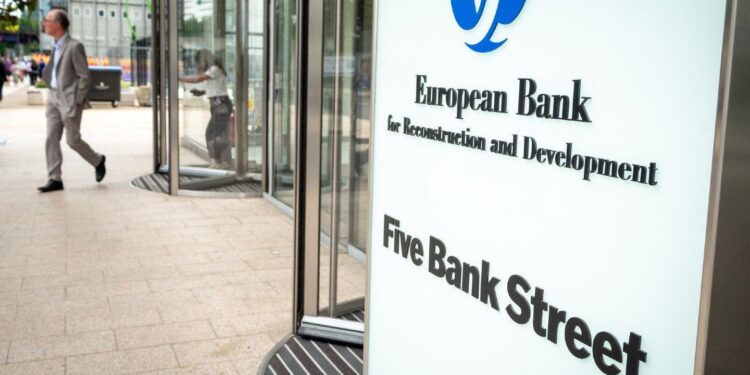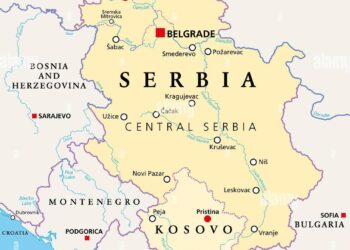The European Bank for Reconstruction and Development (EBRD) has announced a significant initiative to modernize Serbia’s international rail services, aiming to enhance efficiency, connectivity, and sustainability across the region. This move reflects the EBRD’s ongoing commitment to upgrading infrastructure in Southeast Europe, promoting economic growth and closer integration with European transport networks. The modernization project is expected to improve cross-border rail operations, reduce travel times, and support Serbia’s broader aspirations for regional cooperation and development.
EBRD Invests in Upgrading Serbia’s Rail Infrastructure to Boost Connectivity
The European Bank for Reconstruction and Development (EBRD) has committed significant funding towards the comprehensive modernisation of Serbia’s international rail corridors. This strategic investment aims to enhance efficiency, safety, and speed, making cross-border travel and freight transport more competitive and environmentally friendly. Key upgrades include the rehabilitation of track infrastructure, signalling systems, and station facilities, which will facilitate smoother connections with neighbouring countries and boost regional economic integration.
Among the main benefits expected from this initiative are:
- Increased train speeds reducing travel times between major cities and border points.
- Improved reliability through modern signalling and control technologies.
- Enhanced passenger comfort with renovated stations and modernised carriages.
- Greater freight capacity to support Serbia’s growing role as a logistics hub in Southeast Europe.
| Project Component | Target Completion | Expected Outcome |
|---|---|---|
| Track rehabilitation | 2025 | Increase top speeds by 30% |
| Signalling upgrade | 2024 | Reduce delays and enhance safety |
| Station modernisation | 2026 | Boost passenger satisfaction & accessibility |
Enhancing Passenger Experience through Advanced Rolling Stock and Technology
Passengers travelling on Serbia’s international rail routes are set to benefit from a significant upgrade in comfort and convenience, as the newly introduced rolling stock incorporates state-of-the-art technology and ergonomic design. Modern trains equipped with Wi-Fi connectivity, real-time travel updates, and advanced climate control systems will transform the journey experience, making long-distance travel more enjoyable and efficient. Moreover, spacious seating arrangements, improved onboard amenities, and accessibility features ensure inclusivity and cater to a wide demographic of travelers.
The integration of cutting-edge technologies is further supported by enhancements in safety and operational efficiency, including:
- Automated diagnostic systems reducing downtime and improving reliability
- Energy-efficient traction units lowering environmental impact while maintaining performance
- Enhanced passenger information systems providing multilingual announcements and digital displays
| Feature | Benefit |
|---|---|
| Wi-Fi Connectivity | Continuous internet access during travel |
| Real-time Travel Updates | Accurate information on delays and connections |
| Ergonomic Seating | Increased comfort on long journeys |
| Energy-Efficient Systems | Reduced carbon footprint |
Strategic Recommendations for Sustainable and Efficient Rail Service Expansion
To significantly enhance Serbia’s rail infrastructure, a focused approach on integrating cutting-edge technology and prioritizing environmental sustainability is essential. Investments in modern signalling systems and electrification will not only increase operational efficiency but also reduce carbon emissions, aligning with broader European green transport goals. Moreover, strengthening cross-border cooperation with neighbouring countries will facilitate smoother international rail traffic, boosting economic ties and passenger convenience. Adopting digital ticketing and real-time passenger information platforms can further elevate the user experience, encouraging a modal shift away from road transport.
Strategic deployment of resources must also consider capacity-building initiatives aimed at workforce training and maintenance best practices. The following table highlights key focus areas and projected impact metrics to guide future planning:
| Focus Area | Expected Outcome | Timeline |
|---|---|---|
| Signal System Upgrades | 30% increase in line capacity | 2025-2027 |
| Electrification Expansion | Reduction of CO2 emissions by 25% | 2024-2028 |
| Cross-border Coordination | 15% faster customs clearance | 2023-2025 |
| Digital Platforms | Improved passenger satisfaction by 40% | 2024-2026 |
- Prioritize multimodal connections for seamless first-mile and last-mile integration.
- Incentivize private sector partnerships to accelerate modernization efforts.
- Embed sustainability criteria in all stages of project planning and execution.
Wrapping Up
The European Bank for Reconstruction and Development’s commitment to modernising Serbia’s international rail services marks a significant step forward in enhancing regional connectivity and economic development. By investing in advanced infrastructure and technology, the EBRD aims to streamline cross-border transport, reduce travel times, and boost trade efficiency. As these projects progress, Serbia is poised to strengthen its position as a key transit hub in Southeast Europe, fostering greater integration within European transport networks. The continued collaboration between the EBRD and Serbian authorities highlights the shared goal of building a more sustainable and competitive rail system for the future.
















